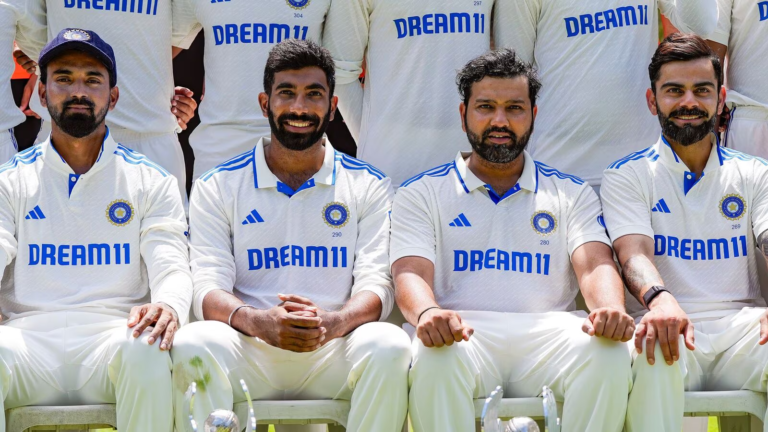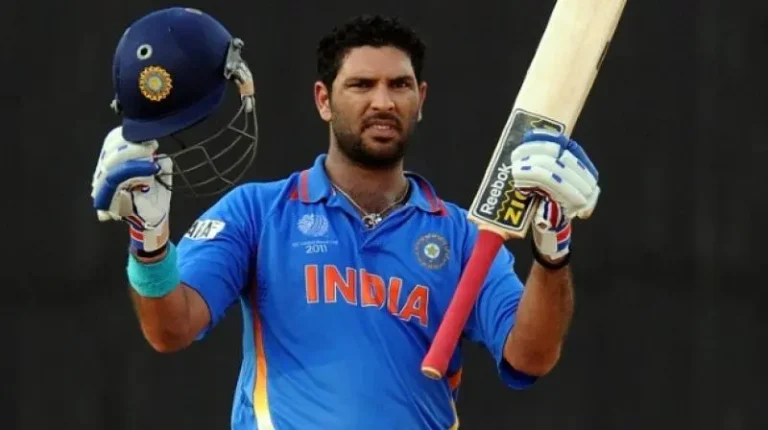Cricket, a sport often described as a “gentleman’s game,” holds a special place in the hearts of millions worldwide. Its evolution from humble beginnings to a global phenomenon is a fascinating journey through history. Understanding this evolution is not just about appreciating a sport, it’s about delving into the cultural, social, and even political forces that have shaped it over centuries.
Early forms of cricket
The origins of cricket can be traced back to medieval England, where it was played in its rudimentary form. Initially, it was a recreational pastime enjoyed by villagers, with no standardized rules.
Historical context
During the 17th century, cricket began to take shape as a formal sport. It gained popularity among the aristocracy and gradually evolved into a competitive game with defined rules.
Early Origins
Cricket’s roots can be traced back to medieval England, where it was played as a simple pastime in rural communities. Initially, the game lacked standardized rules and was more akin to folk football, with matches often played between neighboring villages. However, as the popularity of cricket grew, especially among the nobility, efforts were made to formalize its rules and structure.
Cricket in literature and art
Cricket’s influence extends beyond the field, permeating various aspects of culture, including literature and art. From classic novels centered around cricket to iconic paintings capturing the essence of the game, cricket has inspired countless works of creativity.
Societal impact
Cricket has played a pivotal role in shaping societal norms and fostering unity among diverse communities. Its ability to transcend social barriers and unite people under a common passion highlights its significance as more than just a sport.
Development of Rules and Equipment
The establishment of the Marylebone Cricket Club (MCC) in 1787 marked a turning point in cricket’s evolution. The MCC played a pivotal role in codifying the rules of the game, including the introduction of the LBW (leg before wicket) rule and specifications for equipment such as bats and balls. These standardized rules laid the foundation for modern cricket as we know it.
Spread of Cricket Across the British Empire
As the British Empire expanded its reach across the globe, so too did the game of cricket. British soldiers, administrators, and traders introduced cricket to colonies such as India, Australia, and the West Indies. Cricket clubs sprang up in major cities, serving as hubs for socializing and recreation among the colonial elite.
Establishment of formal rules
The 18th century saw the establishment of formal rules for cricket. The Marylebone Cricket Club (MCC) played a pivotal role in codifying the laws of the game, providing structure and consistency.
Significant rule changes over time
Over the years, cricket has witnessed several rule changes aimed at enhancing fairness and competitiveness. From the introduction of LBW (leg before wicket) to the implementation of technology for decision-making, the evolution of rules continues to shape the game.
Colonial influence
The British Empire played a significant role in spreading cricket across the globe. Colonized nations embraced the sport, incorporating it into their cultural fabric and contributing to its global appeal.
International expansion
Cricket’s popularity transcended borders, leading to the formation of international competitions such as the Ashes series and the Cricket World Cup. Today, cricket is played and followed fervently in countries spanning continents.
Pioneers and Innovators
The history of cricket is dotted with iconic figures who left an indelible mark on the sport. Players like W.G. Grace, with his towering stature and innovative batting techniques, helped popularize cricket in England during the late 19th century. Similarly, Ranjitsinhji, the first Indian cricketer to play for England, showcased the elegance and artistry of the game to a global audience.
The Emergence of Test Cricket
The year 1877 witnessed the birth of Test cricket, with the historic match between England and Australia at the Melbourne Cricket Ground. Test cricket played over five days, became the pinnacle of the sport, showcasing the skills and endurance of players in grueling contests that spanned multiple innings.
Evolution of Playing Techniques
Over the years, cricket has witnessed significant changes in playing techniques, driven by advancements in coaching methods and technology. Batsmen have adopted more aggressive and innovative strokeplay, while bowlers have refined their skills to deceive and outsmart their opponents. The advent of video analysis and biomechanics has revolutionized player development, allowing coaches to fine-tune techniques with precision.
The Impact of World Wars
The outbreak of World Wars I and II had a profound impact on cricket, disrupting domestic leagues and international competitions. Many cricketers volunteered to serve in the armed forces, putting their careers on hold to defend their countries. Despite the hardships of war, cricket played a vital role in boosting morale among soldiers and civilians alike, offering a brief respite from the horrors of conflict.
Introduction of Limited Overs Cricket
The 1970s saw the birth of a new format of the game: One Day Internationals (ODIs). Conceived as a more spectator-friendly version of cricket, ODIs featured limited-overs per side, leading to faster-paced matches with explosive batting and strategic bowling. The inaugural Cricket World Cup in 1975 heralded the dawn of a new era in cricket, captivating audiences with its blend of excitement and drama.
The T20 Revolution
In the 21st century, Twenty20 (T20) cricket emerged as the latest innovation in the sport. Characterized by its fast-paced nature and emphasis on entertainment, T20 cricket captivated audiences with its high-scoring matches and nail-biting finishes. Leagues such as the Indian Premier League (IPL) became global phenomena, attracting top talent from around the world and redefining the economics of cricket.
Governance structures
The governance of cricket has evolved to keep pace with the demands of a rapidly changing landscape. International governing bodies such as the International Cricket Council (ICC) oversee the sport’s development and ensure adherence to standardized regulations.
Commercialization and the rise of leagues
The commercialization of cricket has led to the proliferation of lucrative leagues such as the Indian Premier League (IPL) and the Big Bash League (BBL). These competitions not only provide financial incentives for players but also showcase the sport on a global stage, attracting millions of viewers.
Technological Advancements
Advancements in technology have revolutionized various aspects of cricket, from umpiring decisions to player performance analysis. The introduction of the Decision Review System (DRS) has brought greater accuracy and fairness to officiating, allowing players to challenge on-field decisions using technology such as ball-tracking and slow-motion replays. Similarly, tools like Hawk-Eye provide valuable insights into bowling trajectories and batting techniques, helping players and coaches refine their strategies.
Commercialization and Globalization
Cricket’s growing popularity has attracted significant investment from broadcasters, sponsors, and advertisers, transforming it into a multi-billion-dollar industry. Television rights deals and sponsorship agreements have fueled the commercialization of cricket, while initiatives such as the ICC Cricket World Cup have helped globalize the sport, bringing together teams from diverse cultures and backgrounds on the world stage.
Challenges and Controversies
Despite its widespread appeal, cricket has not been immune to controversies and scandals. Match-fixing allegations, involving players, officials, and even entire teams, have tarnished the integrity of the sport and eroded public trust. Governance bodies like the International Cricket Council (ICC) have faced criticism for their handling of such issues, prompting calls for greater transparency and accountability within the sport.
Inclusivity and Diversity
Efforts to promote inclusivity and diversity have gained momentum in recent years, with initiatives aimed at encouraging participation from underrepresented communities. Women’s cricket, in particular, has seen a surge in popularity, thanks to the success of events like the ICC Women’s Cricket World Cup and the Women’s Big Bash League. Grassroots programs and outreach efforts seek to make cricket more accessible to players of all ages, genders, and backgrounds.
Future Trends and Predictions
Looking ahead, the future of cricket appears bright, with new technologies and formats poised to reshape the game yet again. The rise of digital platforms and streaming services is expected to democratize access to cricket, allowing fans to engage with the sport in innovative ways. Demographic shifts and changing consumer preferences may also influence the direction of cricket, leading to greater emphasis on sustainability, inclusivity, and fan engagement.
Conclusion
The evolution of cricket from its humble origins to its modern incarnation is a testament to its enduring appeal and adaptability. As the sport continues to evolve, it will undoubtedly leave an indelible mark on the global sporting landscape, captivating audiences, and inspiring generations to come.
FAQs
How did cricket originate?
Cricket originated in 16th-century England as a simple bat-and-ball game played in rural communities.
What is the significance of cricket in India?
Cricket holds immense cultural significance in India, evolving into a national obsession and a unifying force that transcends societal divides.
What technological advancements have influenced cricket?
Technological innovations such as Hawk-Eye technology and the T20 format have revolutionized gameplay and the spectator experience in cricket.
How has the T20 format impacted the sport?
The T20 format has ushered in a new era of cricket characterized by fast-paced action, high-scoring matches, and global entertainment spectacles.
What is the role of cricket in fostering national pride?
Cricket serves as a catalyst for fostering national pride and communal solidarity, with iconic moments evoking euphoria and unity among fans.
How has cricket’s evolution transformed spectator engagement?
Cricket’s evolution has transformed spectator engagement through innovations in technology, format, and entertainment, catering to a diverse global audience.

Utpal is a journalist covering online and offline sports in India. He has passion for everything sports and is a regular at various sports events. Follow him to stay abreast of all things sports.







